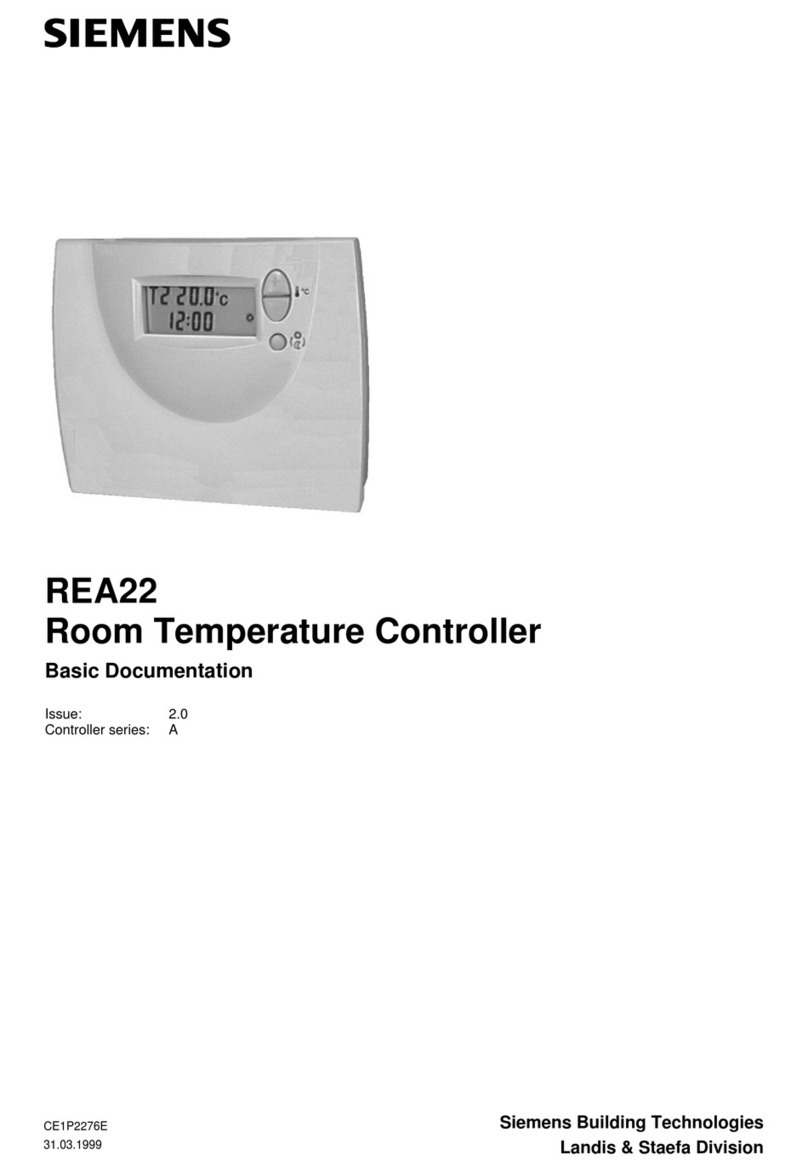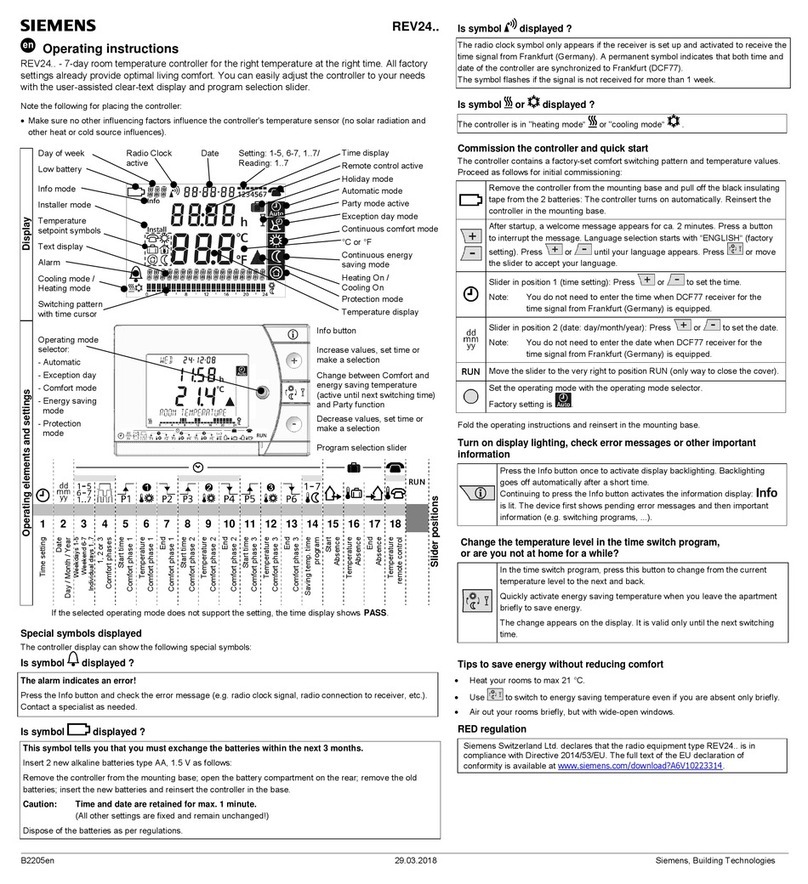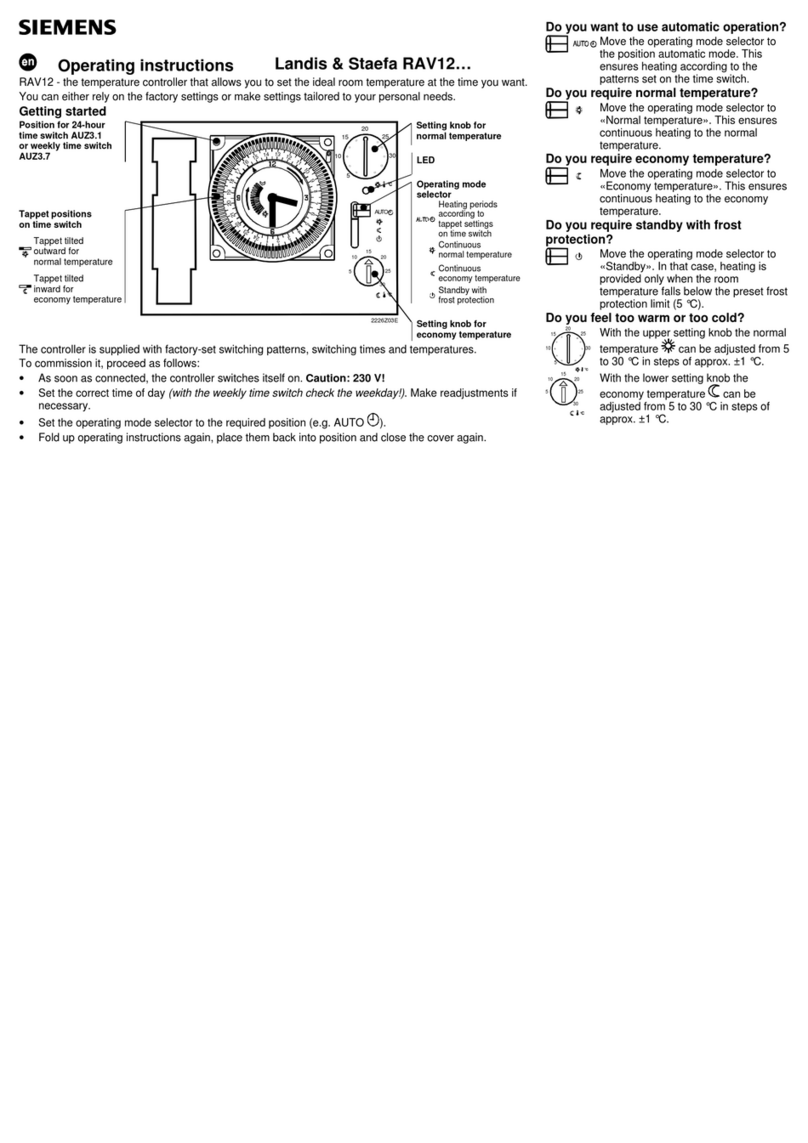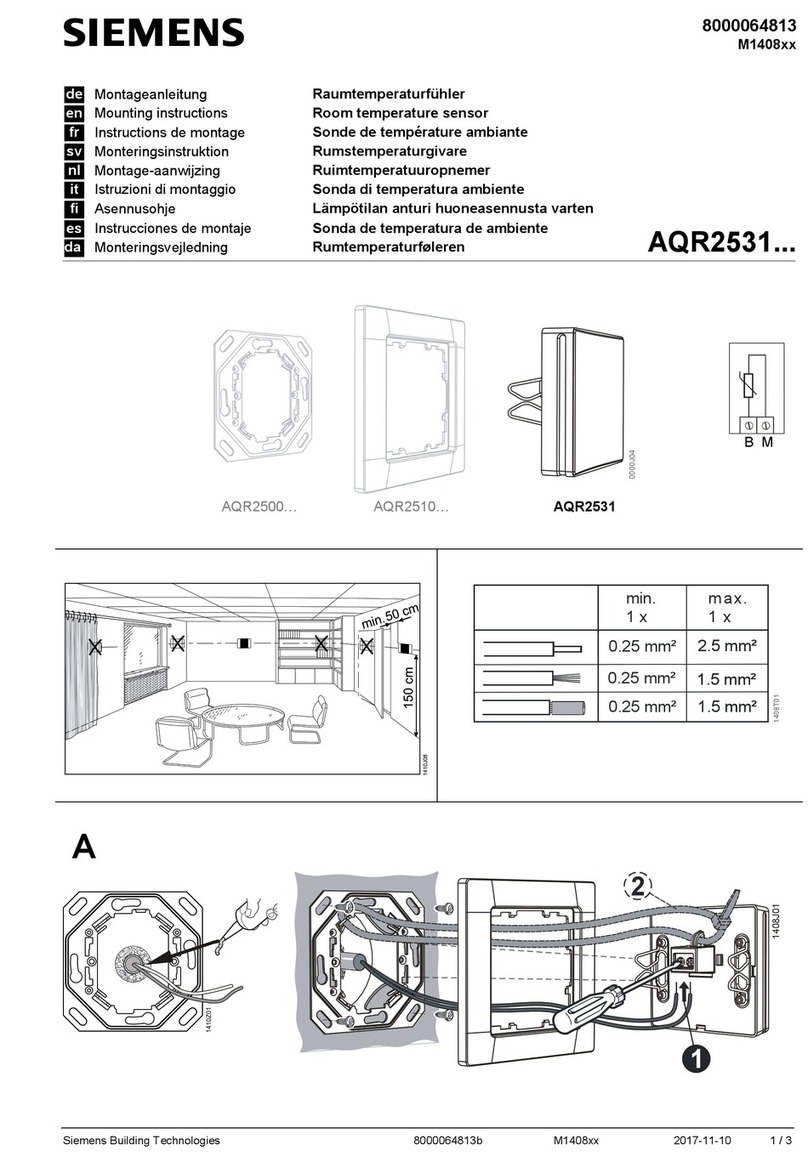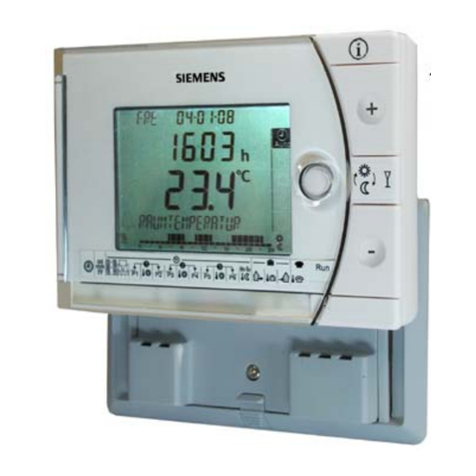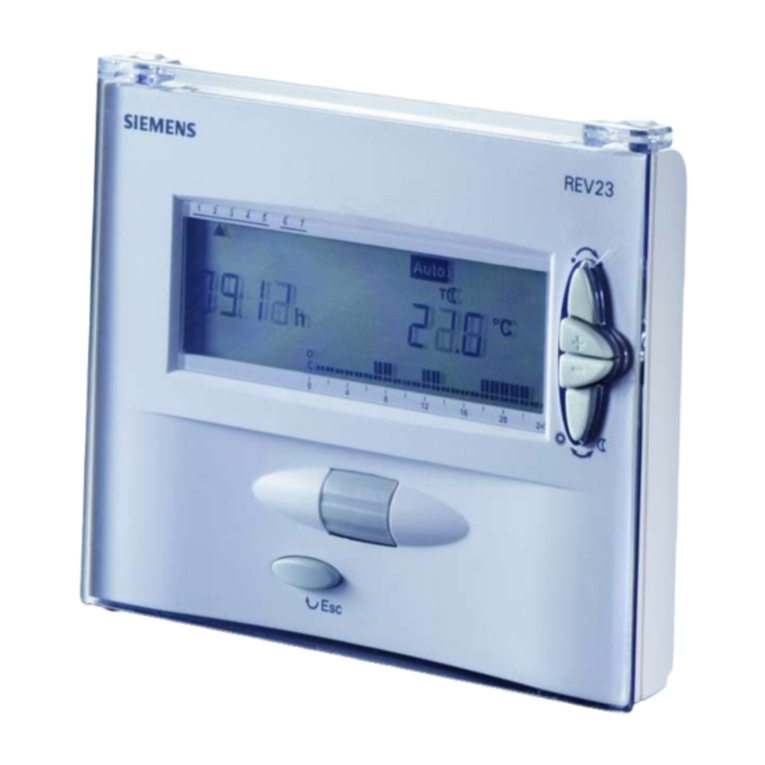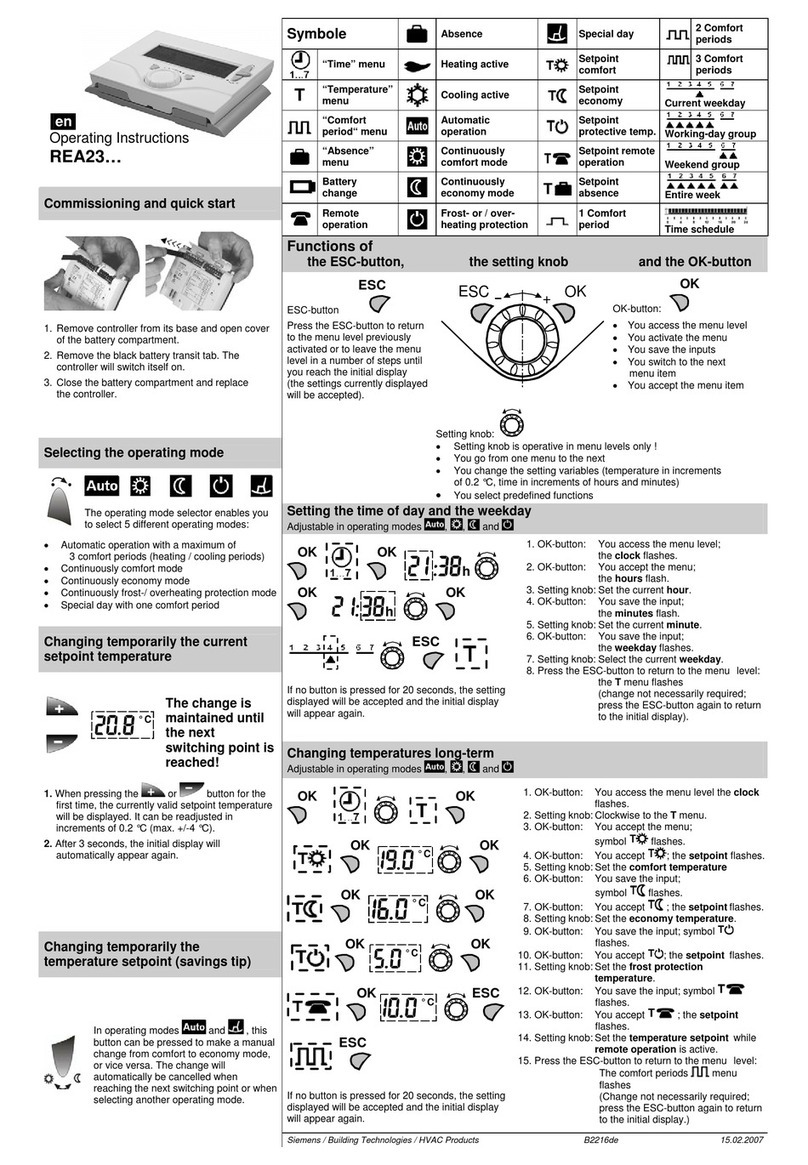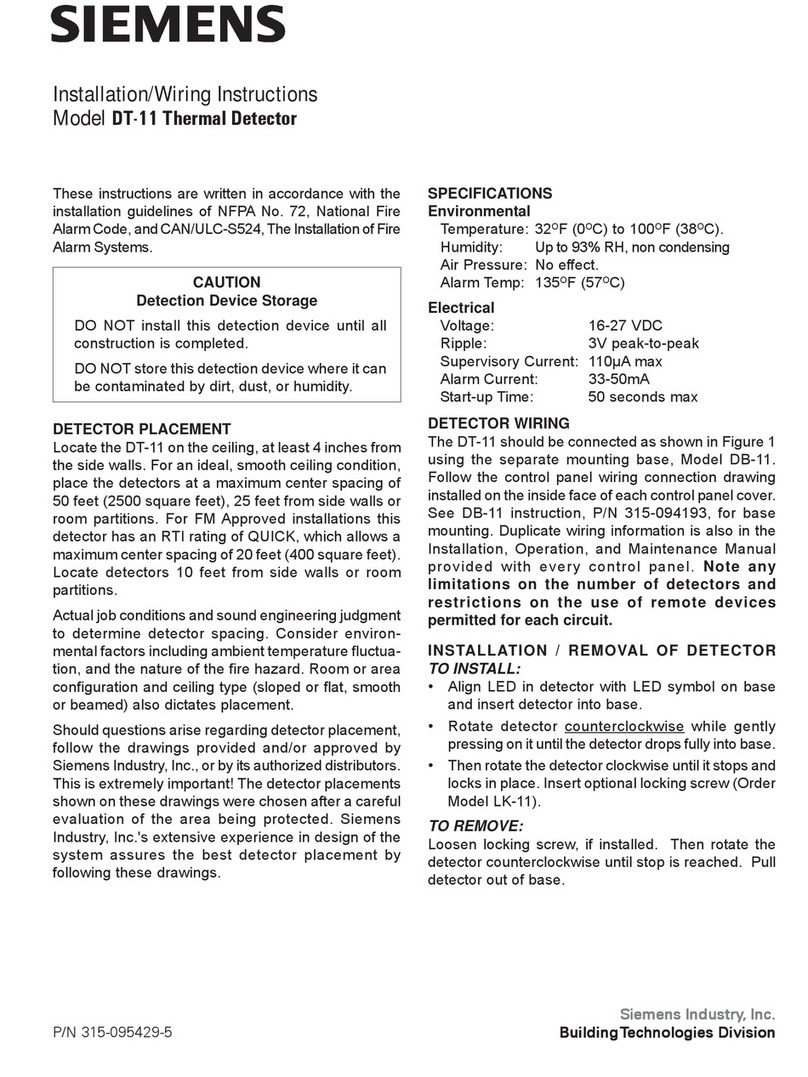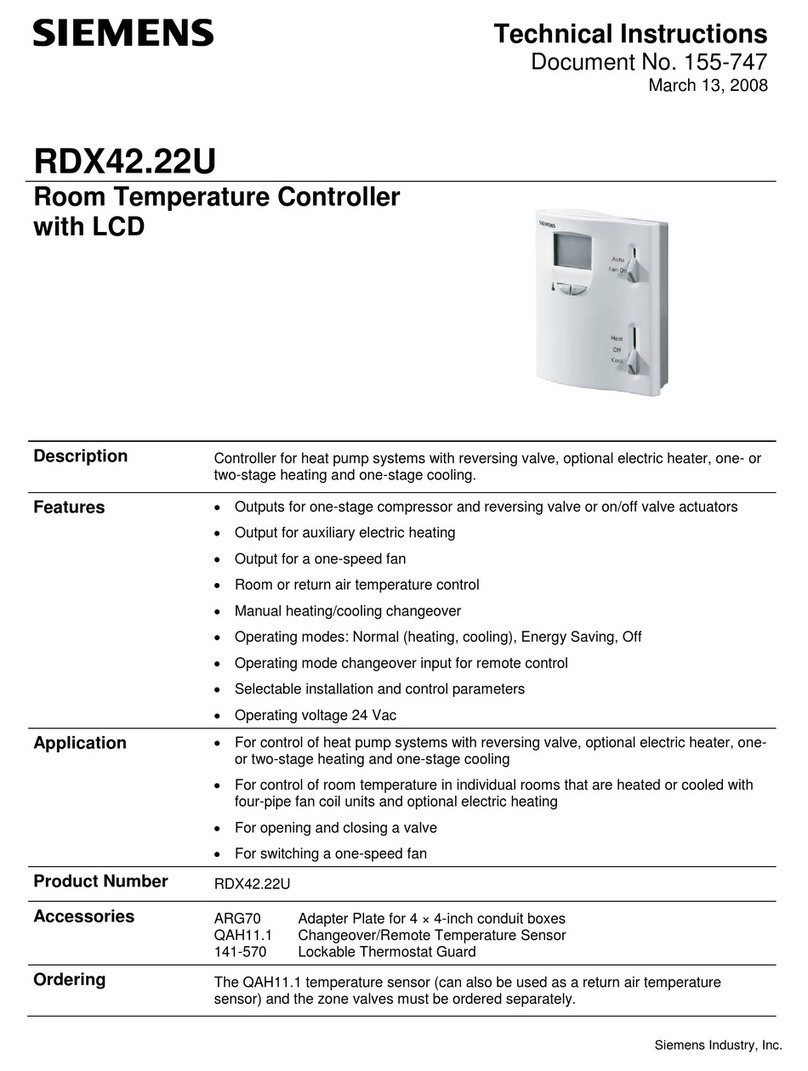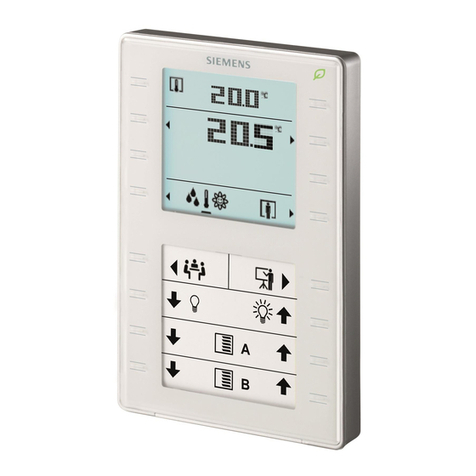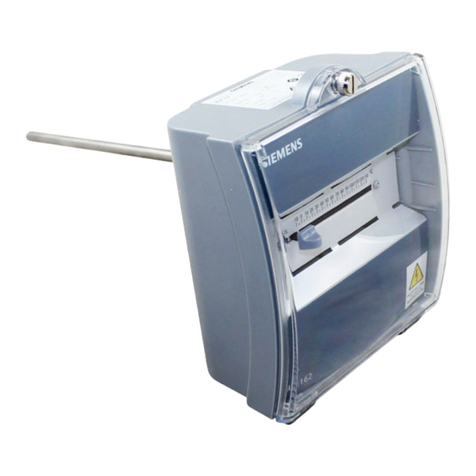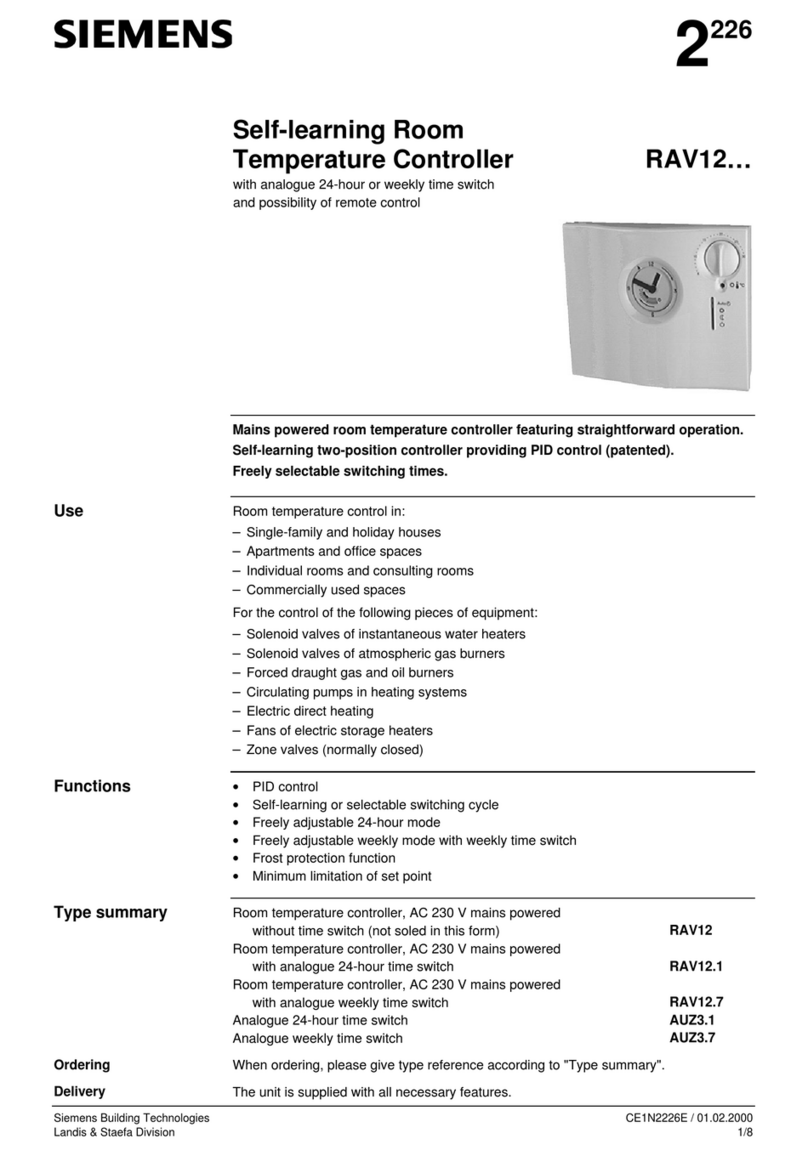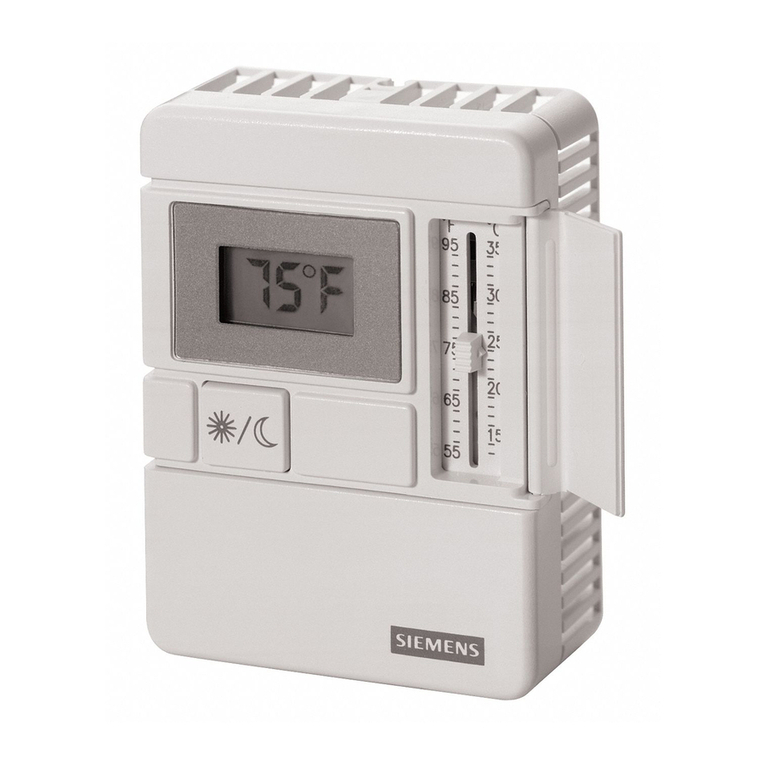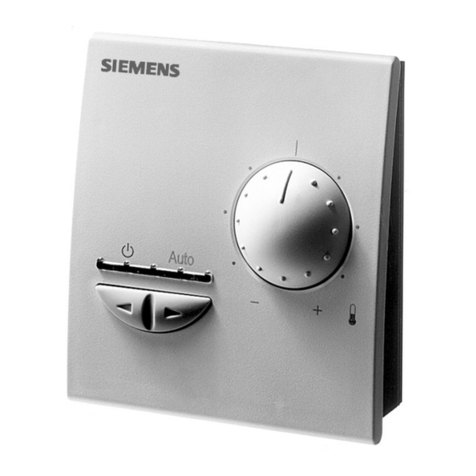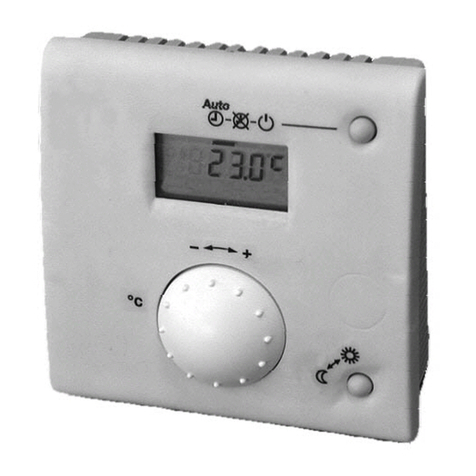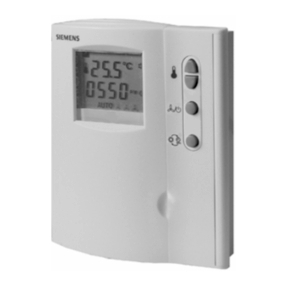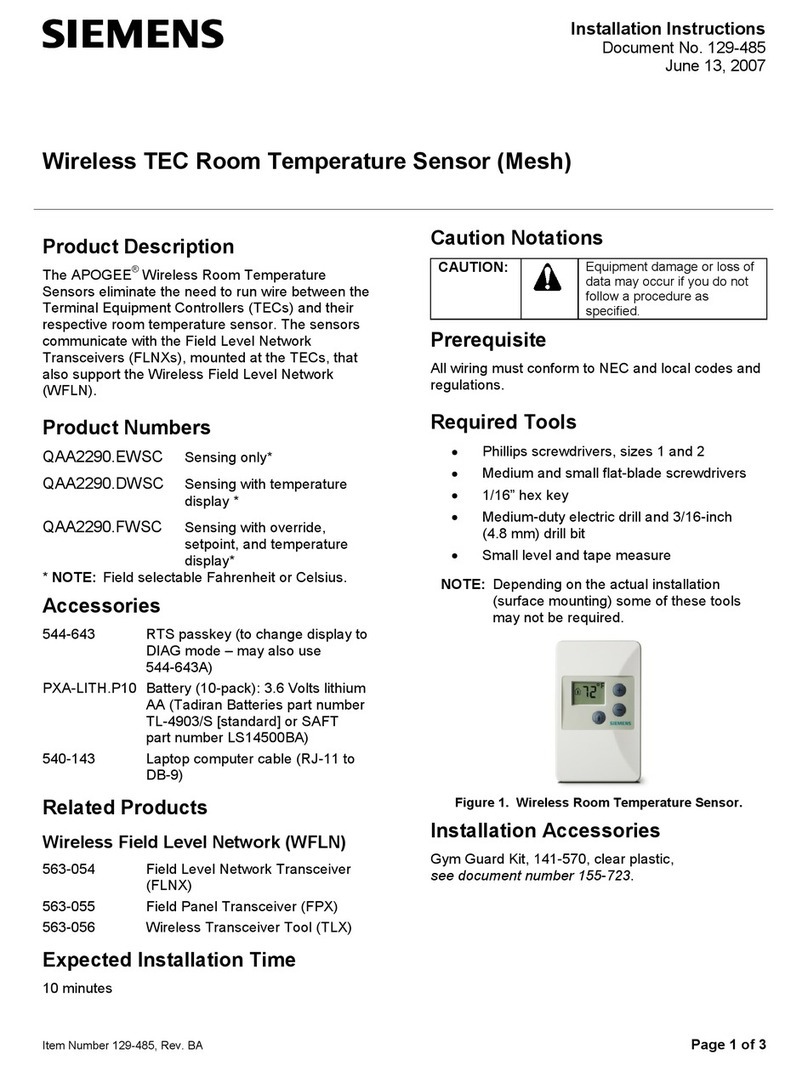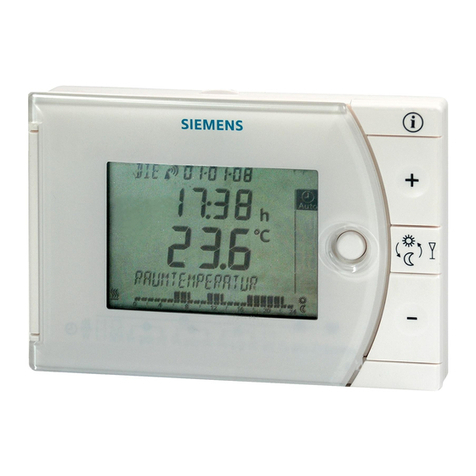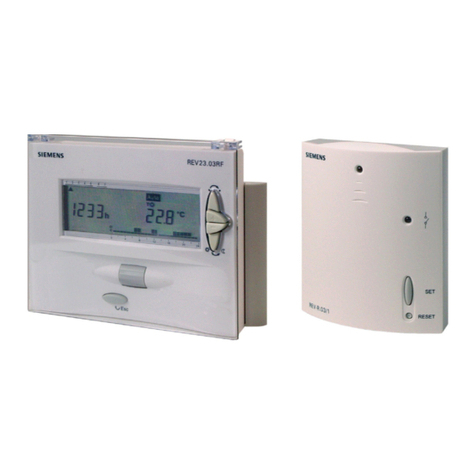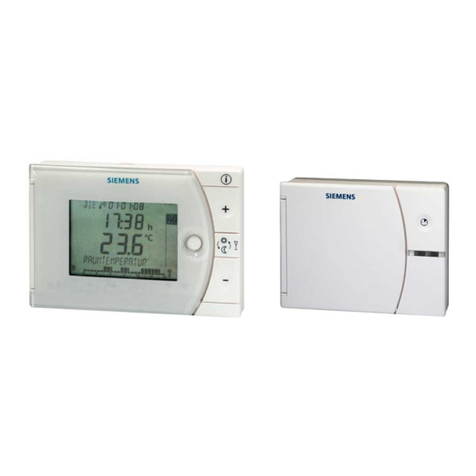Heating engineer level
Access The heating engineer level will be enabled by pressing simultaneously the warmer and
colder buttons and by turning the setting knob counter-clockwise and then clockwise.
Sensor calibration
CAL
If the displayed temperature does not agree with the room temperature effectively
measured, the temperature sensor can be recalibrated (recalibration to be made on the
heating engineer level.)
The displayed temperature can be matched to the effective room temperature in incre-
ments of 0.2 °C (max. ± 2 °C).
Setpoint limitation
Minimum setpoint limitation to 16 °C prevents undesired heat transfer to neighboring
apartments in buildings with several heating zones. The setting is to be made on the
heating engineer menu.
Optimum start control
Optimization brings forward the switch-on point of the first heating period such that the
adjusted setpoint will be reached at the required time.
The setting depends on the type of controlled system, that is, on heat transmission
(type of piping system, radiators), building dynamics (building mass, insulation), and
heat output (boiler capacity, flow temperature).
Optimum start control is switched off at
Example using an actual
room temperature of 18 °C
and a setpoint of 20 °C
t
T
17
18
19
- 4 - 2
2264D03
16
- 3
1/4h/°C
1/2h/°C
1h/°C Start
- 2 - 1 - ½
- 1½
- 1 - ½ - ¼
- ¾
Pon
20
°C
- 1 h
h
h
TRx
h
h
h
h
h
h
h
h
h
1st heating period
(slow controlled system)
(medium controlled system)
(fast controlled system)
(no impact)
Optimum start controll Off
T
T Temperature (°C) TRxActual valve of room temperature
t Forward shift of switch-on point (h) Pon Starting point of optimum start control
Control REA23.03RF is a 2-position controller providing PID mode. The room temperature is
controlled by the cyclic switching of an actuating device.
The controller generates the positioning signals depending on the deviation of the set-
point from the actual value acquired by the built-in temperature sensor.
The rate of response to the deviation depends on the selected control algorithm:
Self-learning mode If self-learning operating mode is active, the controller automatically adapts to the con-
trolled system (type of building construction, heating capacity, type of heaters, room
size etc.). After a learning period, the controller self-optimizes the parameters and then
operates in accordance with the newly learned parameters.
PID 12 mode Switching cycle of 12 minutes for normal or slow controlled systems
(massive building structures, large spaces, cast-iron radiators, oil
burners).
PID 6 mode Switching cycle of 6 minutes for fast controlled systems (light building
structures, small spaces, plate radiators or convectors, gas burners).
2-Pt mode The (factory-set) default mode is 2-Pt mode: simple on/off controller
with a switching differential of 0.5+°C (±0.25 °C) for very difficult con-
trolled systems with large fluctuations in the outdoor temperature.
7/16
Building Technologies Room temperature controller REA23.03RF CE1N2218en
HVAC Products 17.04.2007
